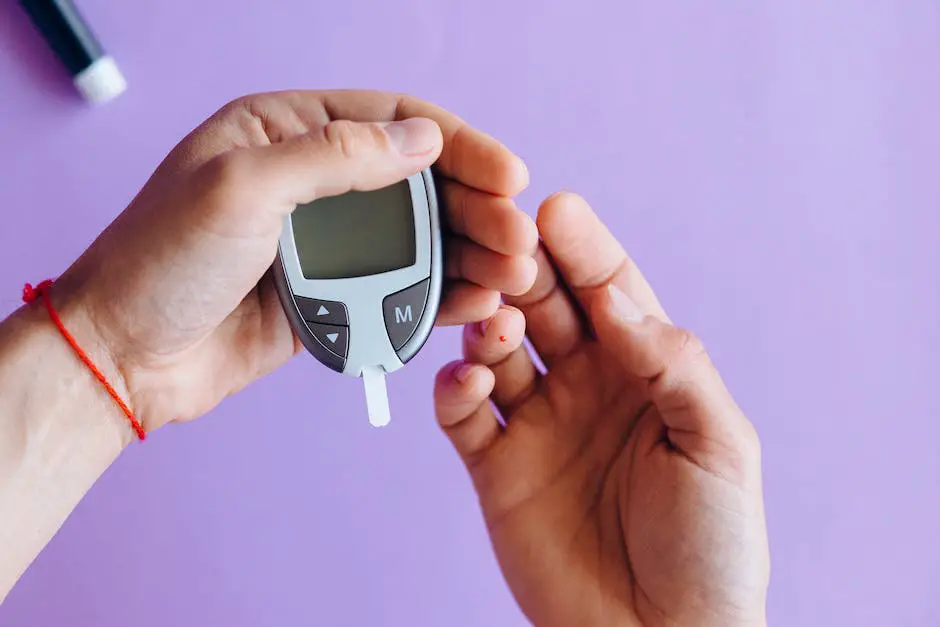Understanding, managing, and confronting the health issues posed by type 2 diabetes, particularly in men, demands extensive knowledge and thoughtful approaches. Delving into this comprehensive essay, a reader embarks on a journey to better comprehend the disorder’s basics, the unique considerations it has for men, and the associated risks it presents. The sum of this knowledge, combined with a deep dive into the nutritional requirements for men with this disease, underscores the indispensable role of diet in effectively managing diabetes. In addition to understanding the disease and one’s nutritional needs, the essay builds upon this foundation, offering a practical guide to selecting ideal food and drink, crafting an effective and person-centered diabetes-friendly meal plan, and embracing lifestyle changes, including regular exercise, to combat this common disorder.
Understanding Type 2 Diabetes in Men
Understanding Type 2 Diabetes
Type 2 diabetes, also known as adult-onset diabetes, is a chronic condition that affects the way the body metabolizes glucose (sugar), its main source of energy. This condition often arises due to body ineffectiveness to properly use insulin- a hormone that regulates the movement of sugar into the cells – or insulin resistance. The pancreas tries to make up for it by producing excess insulin, but over time, this organ’s ability to produce enough insulin to regulate blood sugar levels may dwindle. This leaves too much glucose circulating in the bloodstream.
Risks and Challenges for Men
Men face unique challenges when it comes to type 2 diabetes. They tend to develop diabetes at a lower body weight than women, which means even a slight weight gain can significantly increase the risk. Additionally, men with diabetes have an increased risk of heart disease and stroke compared to their female counterparts. Furthermore, high blood sugar levels can contribute to certain conditions that specifically say affect men, like erectile dysfunction.
Dietary Management
Diet plays a crucial role in managing type 2 diabetes. A healthy diet helps in controlling blood sugar levels, managing weight, and preventing complications. Carbohydrate counting becomes essential because these foods affect blood glucose more than any other nutrients. Men with type 2 diabetes should focus on nutrient-rich, high fiber whole grains, fruits, lean proteins, and vegetables. They should avoid processed foods, sugary drinks, and excessive saturated fats, which can increase blood sugar levels.
Importance of Portion Control
While focusing on what to eat, it’s equally important to consider how much to eat. Portion control is a key part of any diabetes diet. Overeating, even healthier foods, can lead to weight gain and higher blood sugar levels. On the contrary, eating less than recommended can lead to low blood sugar (hypoglycemia). Therefore, using measuring cups, a food scale, or eye estimates can help ensure you’re getting appropriate portions.
Inclusion of Physical Activities
Physical activity, along with diet, is vital in managing type 2 diabetes. It helps lower blood glucose levels, boost insulin sensitivity and aid in weight loss. Men should aim for at least 150 minutes of moderate-intensity exercise each week. Activities such as brisk walking, cycling, or swimming are great ways to get started. Before starting any new exercise regimen, it’s best to consult with a healthcare provider.
Regular Monitoring and Consultation with Healthcare Professionals
Regular monitoring of blood glucose levels and routine check-ups with healthcare professionals can help you manage your type 2 diabetes. It’s also a great way to catch and address any potential complications early. Regular consultation with dietitians can provide individualized nutrition plans that align with your health goals and lifestyle.
Possible Changes over Time
A person’s dietary needs and requirements can change over time, especially as age-related physiological changes occur. It’s important to note that adjustments to the dietary plan might be necessary to continue effectively managing type 2 diabetes. Regular follow-ups with healthcare providers can help with these necessary revisions.
Managing Type 2 diabetes in men is possible through proper diet, necessary lifestyle changes, and, if required, medication. Following these key principles not only aids in controlling the condition but also in preventing or mitigating the onset of any diabetes-related complications.

Nutritional needs for men with Type 2 Diabetes
Understanding Nutritional Guidelines for Diabetic Men
Effective control of Type 2 diabetes in men requires special attention to nutritional guidelines. A practical and efficient diabetes diet plan must ideally encompass a balanced intake of proteins, carbohydrates, and fats.
Proteins perform critical roles in hormone regulation, tissue repair, and maintaining muscle mass. Therefore, men should aim for a minimum of 56 grams of protein per day, which can come from lean meats like poultry or plant-based options such as nuts, seeds, and legumes.
Since carbohydrates profoundly affect blood sugar levels, it’s important to choose complex carbs like whole grains, fruits, and vegetables over simple sugars. Complex carbs absorb slower, ensuring a steadier blood sugar level and minimizing the risk of sudden spikes.
Lastly, even though fats are necessary, they should be carefully chosen and consumed in moderation. Healthier choices would include monounsaturated and polyunsaturated fats found in foods like avocados, olives, and various types of fish, rather than saturated and trans fats.
The Importance of Portion Sizes
Portion size is another critical aspect of a Type 2 diabetes diet for men. Overeating, even of healthy foods, can contribute to weight gain, worsen blood sugar control, and lead to other associated health problems. Using measuring cups or a kitchen scale can help to keep portion sizes in check.
A commonly used method to ensure appropriate portion sizes is the plate method. This involves dividing the plate into sections – one half of the plate filled with non-starchy vegetables, one quarter with lean proteins, and the remaining quarter with whole grains or other carbohydrate-rich foods.
Reading Nutrition Labels
Understanding nutrition labels can make it easier for men with type 2 diabetes to manage their nutritional intake. By reading these labels, they can avoid foods with high levels of unhealthy fats, sugars, and sodium, while targeting those with beneficial fiber and protein.
The “Total Carbohydrates” figure on nutrition labels comprises dietary fibers, sugars, and other carbs. Focusing on this total will aid blood sugar management. Dietary fiber, included within total carbohydrates, aids digestion and can slow the absorption of sugars. Therefore, foods high in dietary fiber can be beneficial.
The Crucial Role of a Balanced, Nutritious Diet
For men struggling with Type 2 diabetes, the key to managing this disease and maintaining a healthy life is a well-rounded, nutritious diet combined with regular physical activity. A diet rich in proteins, carbohydrates, and fats, when balanced properly, can help stabilize blood sugar levels, contribute to weight management, and reduce the risk of complications associated with diabetes. Regular consulting with a dietitian or healthcare provider is strongly advised to monitor the effectiveness of the diet and to make necessary modifications.

Ideal Foods and Beverages for Men with Type 2 Diabetes
Dietary Importance in Coping with Type 2 Diabetes
In dealing with Type 2 diabetes, which is characterized by the body’s inability to effectively use or produce insulin leading to high blood sugar levels, a balanced diet plays a central role. Continuous high sugar levels can pose serious health risks over time. It is, therefore, fundamental for men diagnosed with Type 2 diabetes to strictly adhere to a balanced dietary regime. This will aid not only in effective blood sugar management, but also in reducing the risk of severe health complications that could occur.
Best Food Choices for Men with Type 2 Diabetes
Men with type 2 diabetes are recommended to opt for a diet rich in lean proteins, complex carbohydrates, and healthy fats. Lean proteins such as skinless chicken, turkey, fish, and lean cuts of meat are good choices. Eggs, and plant-based proteins like lentils, chickpeas, and tofu are also beneficial.
Complex carbohydrates, like whole grains and starchy vegetables, are crucial because they are slowly digested, which helps to prevent spikes in blood sugar levels. Examples include brown rice, quinoa, oats, sweet potatoes, and whole grain bread or pasta.
Healthy fats, mainly monounsaturated and polyunsaturated fats, are essential for maintaining heart health. These can be obtained from foods like avocados, nuts, seeds, and olive oil.
Additionally, including ample amounts of non-starchy vegetables like spinach, broccoli, bell peppers, and zucchini can provide necessary nutrients without significantly affecting blood sugar levels.
Recommended Drinks for Men with Type 2 Diabetes
When it comes to beverages, water is the best choice for staying hydrated without adding extra calories or carbohydrates. Unsweetened tea and coffee can also be consumed in moderate amounts. It’s important to emphasize that drinks with low-fat milk and sugar substitute can be enjoyed, but should be controlled due to their possible impact on blood sugar levels.
Foods to Limit or Avoid
Foods with high amounts of saturated and trans fats, such as fatty cuts of meat, fried food, and high-fat dairy products should be limited. Also, refined carbohydrates like white bread, white rice and sugary snacks should be avoided due to their impact on blood sugar levels.
Beverages to Limit or Avoid
Drinks high in sugar such as sodas, energy drinks, and fruit juices should be avoided as they can rapidly increase blood sugar levels. Alcoholic beverages should be consumed in moderation, if at all, to avoid potential spikes in blood sugar levels.
For men dealing with type 2 diabetes, it’s essential to understand that their dietary habits play a significant role in managing the condition. It’s not just the type of food that matters but the amount consumed as well. Therefore, maintaining portion control is crucial. Furthermore, ongoing consultation with a healthcare professional or a dietitian can help tailor and adjust the diet to individual needs. Besides a balanced diet, regular exercise and keeping a healthy weight are fundamental to effective diabetes management.

Creating a Diabetes-Friendly Meal Plan
Grasping the Role of Nutrition in Type 2 Diabetes
As a chronic health disorder, type 2 diabetes primarily causes insulin resistance, leading to the need for substantial dietary modifications for effective management. This condition makes it challenging for your body to efficiently use insulin to allow glucose into cells for energy production. Consequently, the glucose builds up in your bloodstream, resulting in elevated blood sugar levels. Adopting a diet that helps control blood sugar is a fundamental strategy for managing type 2 diabetes and preventing its associated complications.
Creating a Balanced Meal Plan
Creating a balanced meal plan for men with type 2 diabetes involves incorporating the right mix of nutrients in each meal. A dietitian or healthcare provider will typically recommend an eating plan that includes a variety of healthy, nutrient-dense foods like whole grains, lean proteins, fruits, vegetables, and heart-healthy fats.
For carbohydrate intake, it’s best to opt for complex carbohydrates like those found in whole grains, fruits, and vegetables because they are digested more slowly, providing a more steady release of glucose into the bloodstream. Refined carbohydrates, such as white bread and sugars, are typically avoided as they can cause blood sugar spikes.
Lean proteins, such as chicken, fish, eggs, and low-fat dairy are important for keeping you satiated and helping maintain muscle. Heart-healthy fats found in avocados, nuts, seeds, and fatty fish aid in reducing inflammation and improving heart health.
Meal Scheduling and Blood Sugar Management
Meal scheduling can greatly impact blood sugar levels. It generally includes three balanced meals and two or three snacks per day, evenly spread out. This helps to prevent blood sugar spikes and crashes and keeps energy levels steady throughout the day.
Tracking carbohydrate consumption and using the plate method (half of the plate filled with non-starchy vegetables, one quarter with lean protein, and one quarter with whole grains or other complex carbohydrates), is a useful strategy for organizing meals.
Cooking Tips for Men with Type 2 Diabetes
Cooking meals at home can make it easier to manage a diabetes-friendly diet. You can control portion sizes, ingredient quality, and the cooking method.
It’s best to favor grilling, baking, or steaming foods over frying to reduce fat intake. Experimenting with different herbs and spices can add flavor without the need for excess sodium, which should also be monitored in a diabetes-friendly diet.
When dining out, strategies can include previewing the menu online for healthier options, asking for nutritional information, or requesting substitutions to make a meal more diabetes-friendly.
Embracing Exercise in Managing Type 2 Diabetes
Incorporating regular physical activity into your lifestyle plays a vital role in managing blood sugar levels, particularly for those with type 2 diabetes. Exercise aids in enhancing insulin sensitivity and managing weight, which are significant factors for diabetes control. The American Diabetes Association recommends at least 150 minutes of moderate-intensity or 75 minutes of vigorous-intensity physical activity on a weekly basis.
Moreover, closely monitoring your blood sugar levels pre and post-exercise is paramount. Necessary adjustments should be made, using food or medication, to avoid hypoglycemia. Men living with type 2 diabetes should collaborate with their healthcare providers to devise a personalized diet and exercise plan that is tailored to their needs and overall health objectives.

Lifestyle changes and Exercise
Nutrition Guidelines to Support Men with Type 2 Diabetes
The element of paramount importance for managing type 2 diabetes is consumption of a balanced and nutritious diet. This approach aids in maintaining stable blood sugar levels. The primary constituents of your meal plans should be nutrient-rich whole foods, such as lean proteins, fiber, whole grains, fruits, and vegetables. Foods laden with added sugars and unhealthy fats, such as desserts, fried foods, and sugary drinks, must be avoided as much as possible. Furthermore, establishing a regular eating schedule and controlling portion sizes are key tactics to prevent sudden fluctuations in blood sugar levels.
Importance of Physical Activity
Exercise compliments dietary management in controlling Type 2 diabetes. It increases insulin sensitivity, thereby lowering blood sugar levels. Cardiovascular exercises such as walking, cycling, swimming, and strength training are beneficial. Ideally, diabetic men should be physically active for at least 30 minutes a day, five days a week. If you’re new to exercise, start off slowly and gradually increase the intensity.
Remember, it’s always wise to consult your healthcare provider before starting any new exercise routine. You may need to adjust your diet or medication schedule to avoid hypoglycemia during or after exercise.
Lifestyle Modifications and Stress Management
In addition to diet and exercise, other lifestyle modifications play an instrumental role in managing Type 2 diabetes. This includes regular health checkups, monitoring blood sugar levels, and quitting smoking.
Stress is another factor that can significantly impact blood sugar levels. When stressed, the body releases hormones that can cause blood sugar levels to increase. Implementing stress management techniques like deep breathing exercises, yoga, mindfulness, or any relaxing activities can help maintain healthy blood sugar levels. Adequate sleep is also crucial as chronic sleep deprivation can increase insulin resistance.
Alcohol and Type 2 Diabetes
Drinking alcohol can cause blood sugar levels to rise or drop, depending in part on how much you drink. Moderate alcohol intake is generally okay, but it’s best to talk with your healthcare provider on what quantity is safe for you to consume. Regardless, it’s advisable to not drink on an empty stomach, as it could lead to a severe drop in blood sugar.
In conclusion, the management of Type 2 diabetes in men involves a combination of dietary choices, regular exercise, and lifestyle modifications. These factors work together to maintain stable blood sugar levels, manage body weight, and prevent potential comorbidities. Regular consultation with healthcare providers and dietitians can ensure that these strategies are personalized and thus more effective. Keep in mind that managing diabetes is a lifelong commitment which requires patience, persistence, and goal-oriented planning.

Embracing the overall path to managing type 2 diabetes in men comprises more than merely understanding the disease or reading nutrition labels; it involves actively applying that gained knowledge to everyday life decisions revolving around diet, exercise, and overall lifestyle. Throughout this comprehensive essay, readers are equipped with the necessary tools and insights to make informed decisions, ranging from food selections and portion control to designing effective meal plans and incorporating suitable exercises. With this robust understanding, managing diabetes isn’t an insurmountable struggle, but an achievable daily goal contributing to a more balanced and healthier lifestyle. The journey doesn’t end here, as continually staying informed and adapting to new findings and recommendations is an essential part of living with type 2 diabetes. So, let’s continue to equip ourselves with the right knowledge, make healthier choices, and live a lifestyle that positively impacts our health in managing type 2 diabetes.
